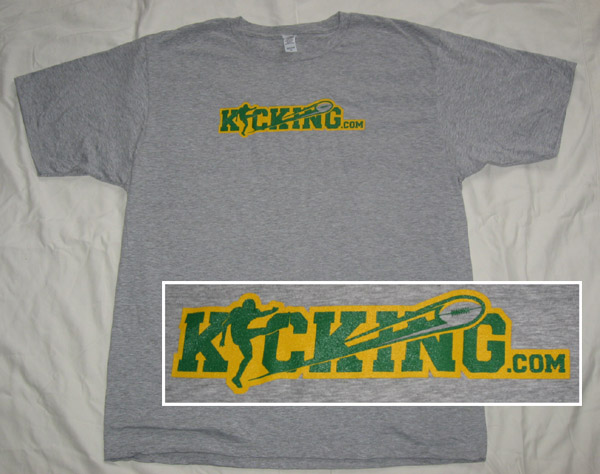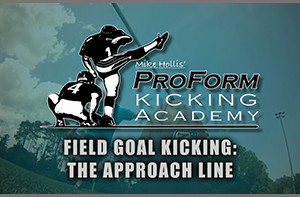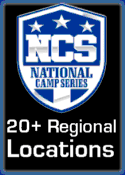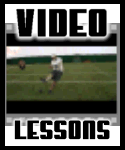| |
 Practice like a game situation
Practice like a game situation
Brion Hurley
Article posted on 9/19/2010
As I talk with kickers and punters, I'm reminded of how much advice I give that differs from what I actually did as a young kicker/punter.
One of the areas in which I would have dramatically done things differently was how I practiced.
In high school and college, I would kick over and over again, maybe 70-100 footballs each time, one after the other, until I got into a routine (or groove), and I would convince myself that it was helping me get stronger and better (more repetitions = more success). That was incorrect thinking...
What I didn't learn was how to prepare for a game situation. You might kick once a game, or 2 hours between kicks, or a PAT and kickoff within 30 seconds of each other. I would warm-up with FGs, then kickoff, but never back and forth, which is what really happens. This is just one situation of many where we don't "practice for success"...
Here are some tips on what to do differently when you kick, to properly prepare yourself for game situations.
- separate your kicks/punts by at least 5 minutes. This will also emphasize quality over quantity in your practice routine. In addition, it will force you to concentrate on each kick and what happened afterwards, and avoid teeing up right away after a miss, since you won't get a re-kick in a game.
- run on the field from the sidelines, and give yourself a situation in the game to practice (need to land the ball inside the 20, or kick a 32-yard FG from left hash to tie the game in OT).
- mix up the time that you wait in your stance, after you have taken your steps. Sometimes you have to go right away, other times you're standing there for 10-15 seconds. Get used to dealing with both extremes.
- change the tilt, angle, direction of laces, and placement of the ball on the tee or when receiving a snap, to simulate your holder's and snapper's inconsistency.
- practice a kicking/punting technique for poor weather games (shorter approach), so you aren't trying something new in a game. That means you'll need to go outside during bad weather to specifically practice this!
- wear your helmet and pads as much as possible, since your face mask, thigh pads and helmet weight do play a factor in visibility and mobility.
- practice against the wind and with a cross-wind, since your offense will struggle in windy conditions, and will rely on you even more, so those situations will be more common than you think!
- kick/punt after team sprints, when your legs are tired, to simulate game conditions when you are nervous or worn out from trying to stay loose all game. This is also a great way to practice mental toughness, because when your legs get tired, your mind starts to go next.
Can you think of other tips? If so, email them to me, and I'll add them to the list...
Learn more about Brion Hurley >>>
Read more Expert Articles >>>
 | Doug, I asked you a couple of years ago if I should pursue kicking, and you encourged me to. Well, because of you and your site, I went from not knowing anything about kicking, to being 1st team all-league my 1st season, and 2nd team all-ohio in my 2nd season (I was never coached, I only used your site). I'm now planning to walk-on to a D-1 college. Thanks so much! |  | | -- Kicking.com member | |
|
|

 Practice like a game situation
Practice like a game situation


 Doug and Tommy's Frequently Asked Questions
Doug and Tommy's Frequently Asked Questions





